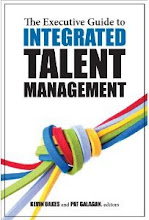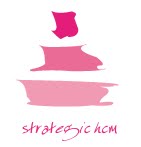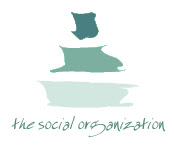 October will also see Connecting HR’s first Unconference. You can find out more about this event on our wonderful new website (thanks Gareth!): http://connectinghr.org.
October will also see Connecting HR’s first Unconference. You can find out more about this event on our wonderful new website (thanks Gareth!): http://connectinghr.org.
You can also find out more about the community, and about HR’s need to connect in this article, originally published in an edited form at Changeboard:
Why do you think there’s a need for HR networks?
Networking is important in all functions, and increasingly so, as the developed world moves ever closer to a more social, relationship based way of doing business (a bit more like the rest of the world perhaps?).
Note that I’m not writing about networking in its crude, ‘what can you do for me?’ sense. The need for networking is simply a reflection of two things. Firstly, there’s the fact that we’re all social animals born with a deep desire to connect. So, networking is about our health and happiness. Then, there’s the fact that most information is fairly meaningless and certainly uninspiring without a social context. Our rate of learning is informed more by who we know than by what we know. So networking is central to our growth and development too.
This second point is particularly important within HR. Most of what we do, at a senior level at least, is more about interpretation than it is about rules. This means that we’ll often need to talk to other people to internalise our own perspectives on an issue. And networking provides us with an opportunity for this. (I’m not saying that there’s no interpretation involved in putting together a balance sheet, but I don’t think there’s quite the same need to talk things through in Finance as there is within HR.)
You’ve then got some additional contextual factors which further emphasise the need for HR networking. HR is internally focused, so we don’t get to deal with people from other organisations so much and networking takes us out of our own businesses. Also, in my view at least, we don’t deal in quite the same space as our business colleagues. To me, HR provides most value by focusing on the organisation value chain, on the creation of human capital, rather than on final business results. I know it’s not currently ‘in’ to say it, but I still think it’s true. This reduces our ability to relate closely with our colleagues in our businesses, and emphasises our need for a third place – somewhere that’s not work, and not non-work, but is based around a community of people who share the same perspectives and interests as us.
How is the nature of networking changing – what new networking trends are emerging & why?
I think, or at least I hope, that networking is changing in line with the above trends. People increasingly understand that networking really only works when you approach it as something that you can be better or worse at (which is important), but for which you can’t force a result. In addition the results are likely to be quite distant in time and space. It’s not the sort of thing that I think lends itself to a ROI calculation for example.
So one main trend is about increased investment in it, and more openness and willingness in doing it. And by this I mean approaching it with a desire to help, rather than be helped. I like Tony Hseih’s comments in his new book, Delivering Happiness, that developing relationships is all about being interested, rather than appearing interesting.
The other main trend, of course, is the role of ‘online’. This has been an increasing trend over the last decade and more, initially through the use of discussion boards and online forums (perhaps less so in HR). But the opportunities for online networking have really started opening up over the last couple of years with the emergence of social media.
Although the use of Facebook still trails well behind Google in the UK, the social network has overtaken the search engine in the US. The FT referred to this event as the web becoming sociable rather than just searchable.
And we’re starting to question some old assumptions, for example, about how much, if any, relationship building needs to be face-to-face. A lot of people, me included, now argue that you can develop close and trustful relationships without never actually having met. (If you don’t believe me, ponder this: in the last year, 17% of all couples who married in the US met on online dating sites.)
Of course, this is all in the context of the recession, meaning that people are finding it harder to find the time and money to support networking. So in some ways it has become harder, but it’s still more important to do.
What led you to launching the Connecting HR network?
We got the network going with a couple of tweet-ups (face-to-face meet-ups for people using or interested in using Twitter and other social media). Given this, my initial reaction to this question was to respond that we’re both reasonably high users of social media and that the network provided a means of extending that interest, meeting more of the people that we exchange online comments with.
But actually, thinking about it, I don’t think it’s that at all. And I’ve not talked to Gareth about this, but I think the real answer to your question is that we’re both believers in the value of connections, relationships, networks and communities.
That’s why we’re into social media. It gives us a basis to extend our own relationships. So Connecting HR isn’t really about social media at all, it’s simply a forum for people to connect and make new / maintain and develop existing relationships.
And the reason we started by organising tweet-ups is that most of the people using social media believe in social connection too. So Twitter users are naturally inclined to participate in face-to-face networking events as well.
Importantly, Connecting HR enables people to network without content getting in the way.
What I mean by this is that for most networking we do, people think there needs to be another attraction on top – a speaker perhaps, or even a whole day of presentations. Networking is seen as a bit of a side attraction that can fit nicely into the coffee breaks. But then everyone leaves the event and the bit they remember is the coffee break, the corridor conversation, and their memory of the formal stuff, the speakers’ presentations, has soon disappeared.
At Connecting HR, we don’t do content. Or at least, we place its importance well behind that of relationships. So the next thing we’re going to be doing is an unconference. This is like, but also unlike, a normal conference. There’ll be no keynote speakers, no long presentations, maybe no power points at all. Instead, people will be encouraged to talk about things that are important to them, and that they think other people might be interested in as well. We’ll have a range of formats, from workshops to speed networking; open spaces to structured corridor conversations – maybe even a ‘HR’s got Talent’ slot as well. All designed to get people connecting and relating.
Yes, people may learn some information too – of course we hope they will. Actually, we’re sure that they’ll learn much more than they would at a traditional conference. But that’s really not the point. The point is networking. The point is community.
What are the benefits for HR professionals joining such a network?
Connecting HR provides an opportunity for HR professionals to network easily - online and offline. The community is mainly made up of practitioners (suppliers are welcome as well, but there are some conditions to attend.) So the networking is with other people like you. People with the same passions, the same interests, the same challenges – but with potentially different experiences and insights.
(There’s also an element of diversity built in as we’ve got people from Reward, L&D, Internal Communication, Employment Legislation, Reward etc who are part of the community.)
What positive feedback have you had and why are these networking events successful?
We’ve had so much positive feedback. And if your readers do an internet search on Connecting HR, they’ll find a lot of it for themselves.
It’s reinforced our belief about people’s need to connect.
I’ll admit that part of the success to date has been a shared interest, and often passion, for social media. But this really isn’t what we’ve talked about when we’ve met. Social media has provided a context, a reason why we’ve all been there. That’s all. (And the unconference will take us even further away from social media, as the agenda will be much broader than this, and many participants may not be users of, or even interested in, social media at all.)
The rest of the network’s success has been down to the lack of presentations, and allowing people to do what comes naturally to fill the gap.
What message would you give out to HR professionals not belonging to any network?
Simple – if you’re based in or around London, join in with ours! - you’ll be very welcome.
Jon Ingham is a strategic people management and organisation development consultant. He writes one of the UK’s leading HR blogs, Strategic HCM, and has been recognised as the top global online influencer in talent management. You can follow him on Twitter at @joningham
Jon’s co-founder of Connecting HR is Gareth Jones. Gareth is Leader, CourtenayHR who blogs at Inside My Head and you can follow him on Twitter at @garelaos.
Photo credit: David.Monniaux
- Consulting - Research - Speaking - Training - Writing
- Strategy - Talent - Engagement - Change and OD
- Contact me to create more value for your business
- jon [dot] ingham [at] strategic [dash] hcm [dot] com
.
 Things have been getting busier on the Connecting HR yammer community as we start to prepare for our HR unconference on 21st October.
Things have been getting busier on the Connecting HR yammer community as we start to prepare for our HR unconference on 21st October.
















 I’ve finally got around to reading Ulrich’s new book,
I’ve finally got around to reading Ulrich’s new book,  One of the
One of the  I was recently interviewed by Craig Endicott for his / Stepstone’s Community Post blog.
I was recently interviewed by Craig Endicott for his / Stepstone’s Community Post blog. I’ve recently been posting on some the events I’ve got coming up this Autumn:
I’ve recently been posting on some the events I’ve got coming up this Autumn: I’ll also be chairing a panel at
I’ll also be chairing a panel at  October will also see Connecting HR’s first Unconference. You can find out more about this event on our wonderful new website (thanks Gareth!):
October will also see Connecting HR’s first Unconference. You can find out more about this event on our wonderful new website (thanks Gareth!):  As well as sessions on
As well as sessions on  Check out these recent posts from my
Check out these recent posts from my 








